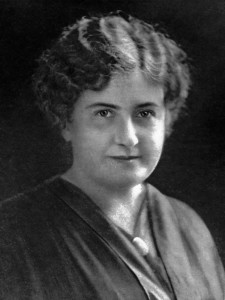 Maria Montessori was in many ways ahead of her time. Born in Italy in 1870, she was highly intelligent, adventurous, determined, and creative. Today the news media would describe her as a person who thinks outside of the box — a pioneer in enabling children to learn through meaningful experiences. Maria Montessori became Italy’s first female doctor, a career unthinkable for a woman at that time.
Maria Montessori was in many ways ahead of her time. Born in Italy in 1870, she was highly intelligent, adventurous, determined, and creative. Today the news media would describe her as a person who thinks outside of the box — a pioneer in enabling children to learn through meaningful experiences. Maria Montessori became Italy’s first female doctor, a career unthinkable for a woman at that time.
Through her early medical work, Dr. Montessori became a leading proponent of educating children with disabilities. This work carried over some years later when she was asked to establish a center to care for 50 preschool aged children who lived in the slums of Rome. It was there at the first “Casa dei Bambini” (Children’s House), that she developed what would ultimately become the Montessori method of education.
Dr. Montessori developed a science of education based on the observation of children’s needs; she looked to the child to teach her. She analyzed her observations to uncover how children learn. She published many books on how to understand and educate the child. The key is for the educator to observe the child, identify a sensitive phase, and then take advantage of this concentrated interest by the child to promote periods of intense learning that comes easily and with little effort for the child. Dr. Montessori focused on the development of the whole child. Her philosophy and method of education enables children to develop independence and self-discipline that leads to freedom and self-confidence. She noted that freedom and self-discipline were both interdependent; one cannot be achieved without the other.
Dr. Montessori learned from her observations that children learn best by being given the opportunity to discover and learn by manipulating objects. She advocated then for what is now called a hands-on approach to learning. She highlighted the child’s need for movement and repetition. Children were encouraged to move and learn and not sit at desks all day. All these observations of the child’s needs have been incorporated into the didactic materials and the methods of working with the materials. Dr. Montessori combined theory with practice. She focused on how to teach children to teach themselves in a scientifically prepared environment. She saw the teacher as a guide to the environment. She was a strong advocate for mixed aged groups of a three year span within a non-competitive environment that would allow each child to develop at his or her own pace.
Dr. Montessori died on May 6, 1952 at the age of 81 in Noordwijk, Netherlands.
For additional information regarding the Montessori program, visit the following links:
 Contact
Contact  Calendars
Calendars Careers
Careers Engage
Engage  District
District